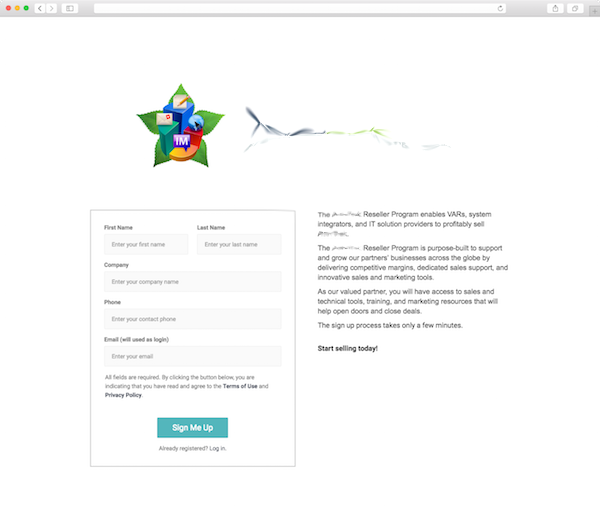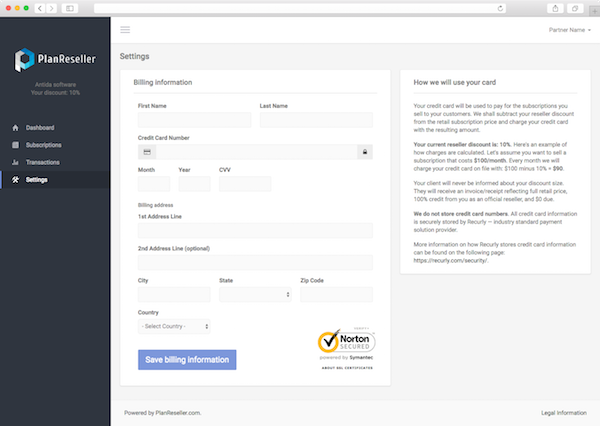Заказчик, команда, начало разработки
Продукт разрабатывался для заказчика из США, релиз первой версии состоялся в марте 2016 года. Разработкой этого проекта занималась команда из шести человек: разработчики, UI/UX-проектировщик и QA-инженер.
Разработка началась с бизнес-анализа, проектирования и создания функциональных UI-прототипов.
Работа вендоров в системе
Вендор может настроить разные уровни партнеров, определив для каждого свой процент скидки, за счет которой реселлер будет зарабатывать. Кроме того, вендор указывает тип расчетов: моментальный или по счету в конце месяца. В первом случае, партнер должен привязать к своему аккаунту банковскую карту и при продаже подписки с нее сразу будет списываться сумма за вычетом скидки. Во втором случае, все продажи будут аккумулироваться, а в конце месяца будет выставлен единый счет.
Внешний вид портала так же настраивается. Цвета и формат текста, кнопок, баннеры и логотипы — все это вендоры могут кастомизировать.
При наступлении определенного события, связанного с партнером, например, изменение уровня или изменение списка доступных тарифов, ему отправляется соответствующее уведомительное письмо. Каждое такое письмо вендор может форматировать, используя встраиваемые переменные.
Вендор из своего личного кабинета может получать всю нужную информацию в реальном времени, строить отчеты и статистические выборки. Вся основная информация выводится на простой Dashboard, который показывает сводку текущего состояния дел.
Работа реселлеров в системе
Партнеры регистрируются на создаваемых вендорами порталах.
Если уровень партнера обязывает его вести моментальные расчеты с вендором, то первым делом он должен привязать к аккаунту свою банковскую карту.
Основной функционал реселлера — управление подписками конечных пользователей. Реселлер может оформлять новые подписки, обновлять и отменять их, зарабатывая на проценте с каждой продажи. Кроме того, реселлеры в реальном времени видят все финансовые показатели за разные периоды времени, общую сумму дохода, регулярный доход и т.д.
На текущий момент продукт успешно работает, имеет платных клиентов и поддерживается нашей командой.








